- Jarquez Hunter is a home run hitter: He gained at least 10 yards on nearly 20% of his carries, and at least 15 yards on 10% of his carries during his last three years at Auburn.
- The Los Angeles Rams draft another running back: The Rams have drafted a running back in eight straight drafts, which means Los Angeles has a crowded backfield.
- Final chance to claim 25% off PFF+: Use code DRAFT25 and unlock access to player grades, fantasy tools and the 2025 Draft Guide
Estimated Reading Time: 5 minutes

PFF’s Fantasy Football Player Profile series delivers the most in-depth fantasy football analysis available for the 2025 season.
Using PFF’s exclusive data, we evaluate player performance, competition for touches and how teammates and coaching staffs will impact each player's fantasy football outlook.
Last updated: 7:15 a.m. Thursday, May 1
Click here for more draft tools:
NFL Draft Big Board | Mock Draft Simulator | NCAA Premium Stats
2025 PFF Draft Guide | Mock Draft Hub | Prospect Data Profiles
Draft Position Rankings
Player performance
Jarquez Hunter spent all four years of his college career playing for Auburn. In his first two seasons, he was a primary backup to Tank Bigsby. While Bigsby is known as a short-yardage back in the NFL, Hunter was playing ahead of Bigsby on early downs in 2022. He’s been most impressive at making defenders miss, finishing with the fifth-best avoided tackles per attempt rate in the class in 2024. This led to several breakaway runs throughout his collegiate career.
Our draft guide notes that he is a patient runner, which often helps him read his blocks, but at times leads to hesitation. Hunter’s numbers as a receiver were largely unimpressive, outside of his avoided tackle rate. Auburn asked their running backs to stay in for pass protection a little more than most teams, and Auburn simply didn’t throw to Hunter much the last two seasons, despite running more routes than he did earlier in his career.
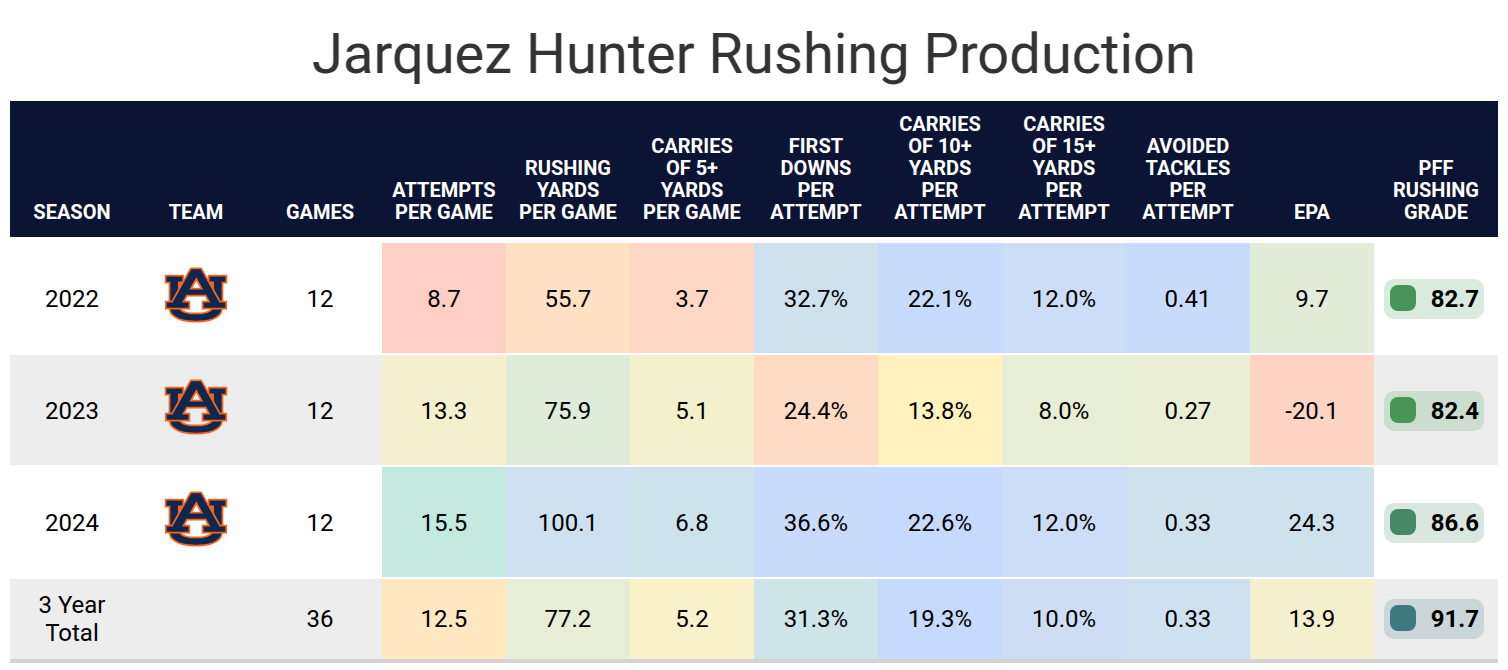

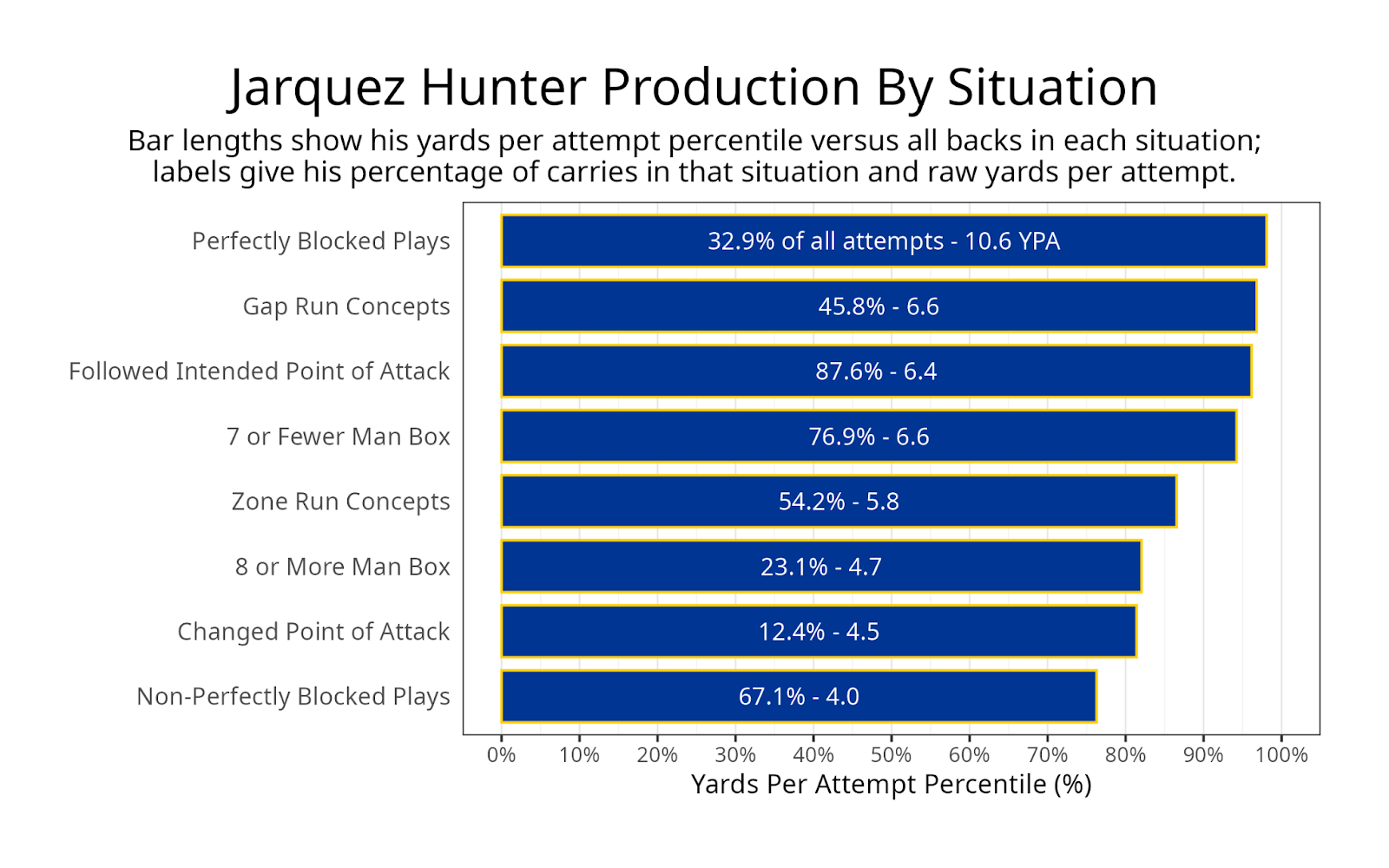
Projected role
Hunter lands in a very crowded Rams backfield. Hunter measured 5-foot-9, 204 pounds at the combine, joining the 5-foot-9, 194-pound Kyren Williams and 5-foot-8, 205-pound Blake Corum. While most teams prioritize having different kinds of running backs who can do various things, the Rams running backs are much more interchangeable. Williams earned the starting job in recent seasons, and the Rams spent more draft capital on Corum than they did on Hunter, which pushes Hunter to squarely third on the depth chart.
There is a chance that the Rams' decision to pick Hunter and barely play Corum last season is a sign that they aren’t as high on Corum now as they were when they drafted him. However, Los Angeles has also drafted a running back every season since 2018, including Zach Evans in 2023, Jake Funk in 2021, Cam Akers in 2020, Darrell Henderson in 2019 and John Kelly in 2018, so they may have drafted Hunter simply because they like stockpiling running backs.
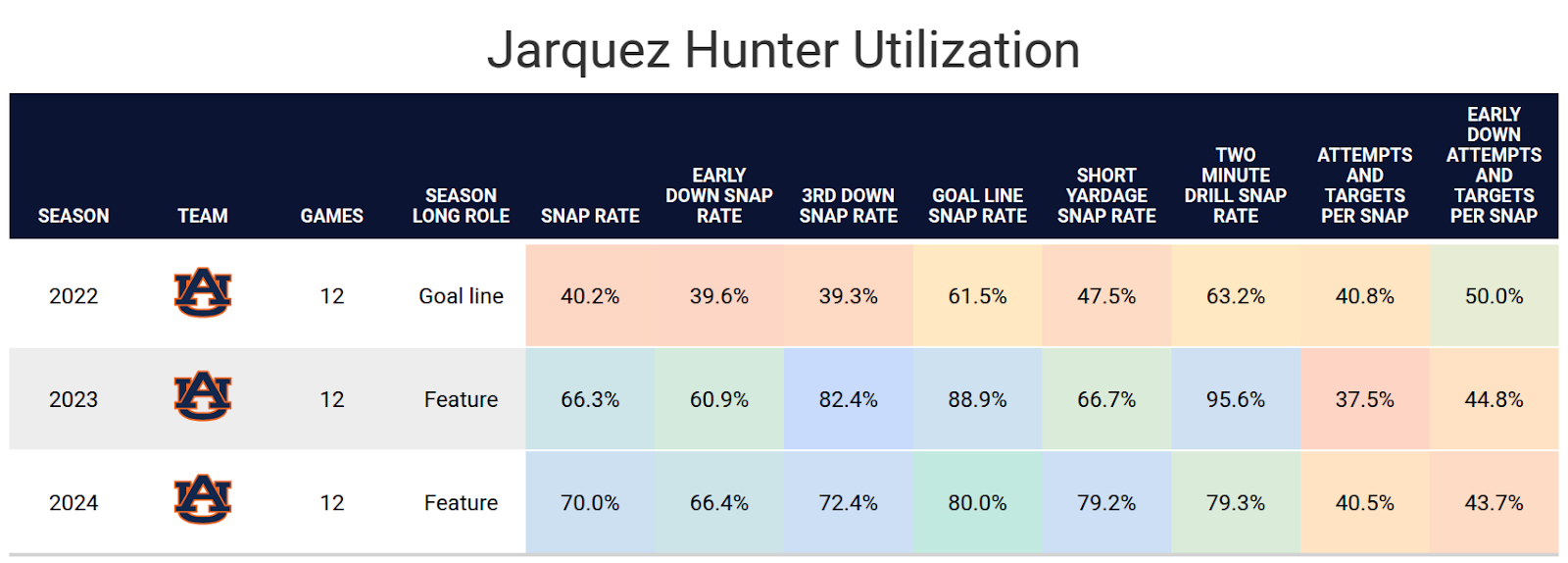
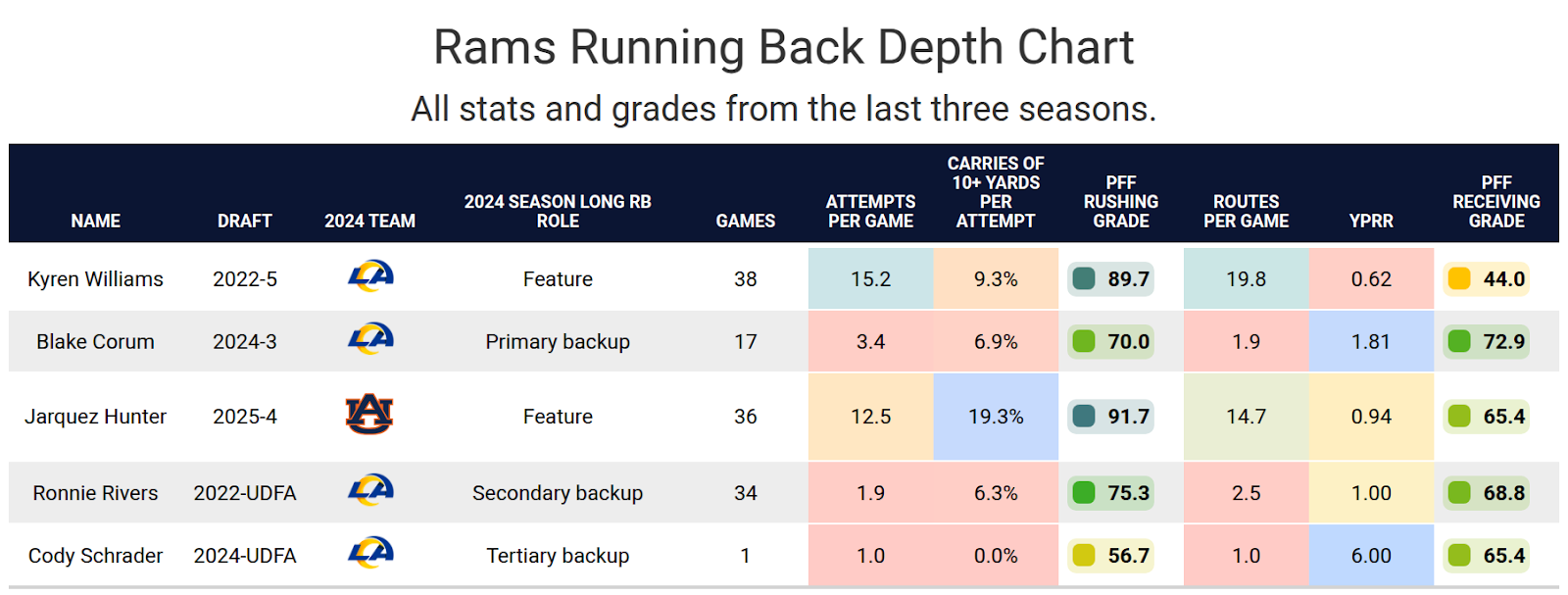
Impact of teammates
The biggest reason to consider taking a chance on Hunter is Sean McVay’s history. His offenses have been consistently potent, posting an above-average rate of running the ball and a stubbornly high rate of using a single primary running back on early downs, rather than employing a committee. This means it’s unlikely that Hunter will see many touches unless he becomes the starter, but if he becomes the starter, he should rank at least among the top-15 running backs in fantasy football. He’s the perfect example of why rankings are more critical than projections during fantasy draft season because Hunter won’t be projected for much of anything. Still, the chances of a top-15 finish are higher than other running backs who will see more playing time on average because their upside is more limited.
The Rams have put together an ascending offensive line. The right side has performed well for multiple seasons, while the left side, featuring Alaric Jackson and Steve Avila, both improved significantly last season compared to the previous year. Their biggest weakness was at center, where they brought back Coleman Shelton after he played one season with the Chicago Bears. In his last season with Los Angeles in 2023, he received a 74.6 run-blocking grade. If everyone can play at the same level they did in their most recent season with Los Angeles, we could see a top-five run blocking performance. However, it is worth noting that right tackle Rob Havenstein will be 33 years old before the season and had offseason shoulder surgery. His run-blocking grade was slightly lower than usual last season at 79.6, and a decline in his quality of play would be completely understandable.
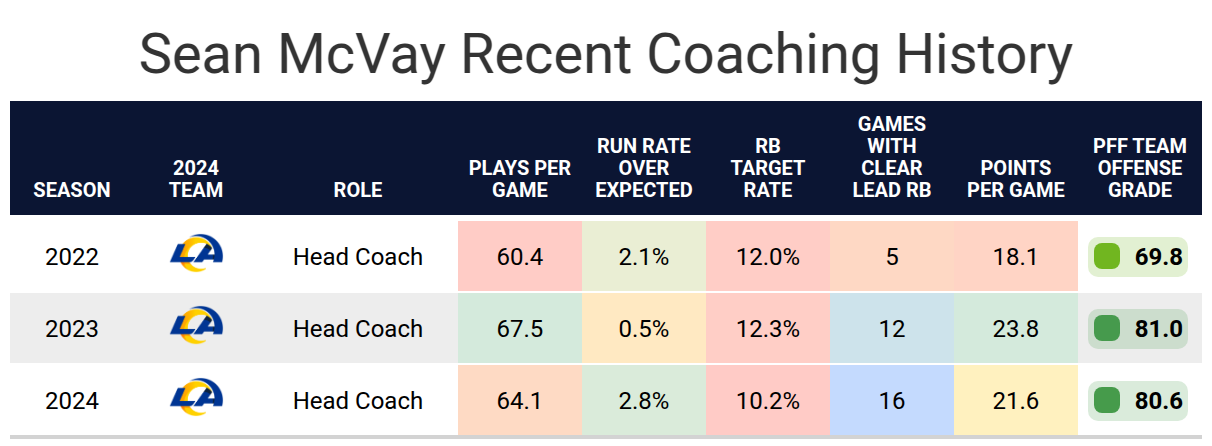

Bottom line
Blake Corum couldn’t find fantasy value last season, and it will be even harder for Hunter to find value this season. However, if he can overtake Corum on the depth chart, he would be the handcuff to Kyren Williams. The starting running back in Sean McVay’s offense has consistently found fantasy value.
Footnotes
- Statistics in tables and charts were chosen based on their ability to predict future fantasy performance on a per-game or per-opportunity basis or to describe the player relative to others at the same position.
- “Opportunities” are defined as passing dropbacks, rushing attempts and routes run as a receiver.
- Numbers are provided either by season or based on the past three years. For rookies, only college statistics are included. For non-rookies, only NFL statistics are considered, regardless of whether they played in college within the previous three years.
- As college competition is easier than NFL competition, most rookies are likely to see a decline from their historical numbers.
- Only FBS data is considered for college players and comparisons.
- Kneel-downs are removed from rushing data to provide cleaner quarterback rushing rate statistics.
- The table colors in this article range from blue (indicating good/high) to red (indicating bad/low).
- All percentiles and color codings compare the given player to others with a high sample of opportunities. Generally, the cutoff is one-third of the possible opportunities in the sample. If a player does not meet the threshold, they are still included in the comparison, though their results may appear better or worse than expected due to the smaller, less predictive sample size.
- Information on utilization classifications and their importance can be found here for running backs, wide receivers and tight ends.



 © 2025 PFF - all rights reserved.
© 2025 PFF - all rights reserved.